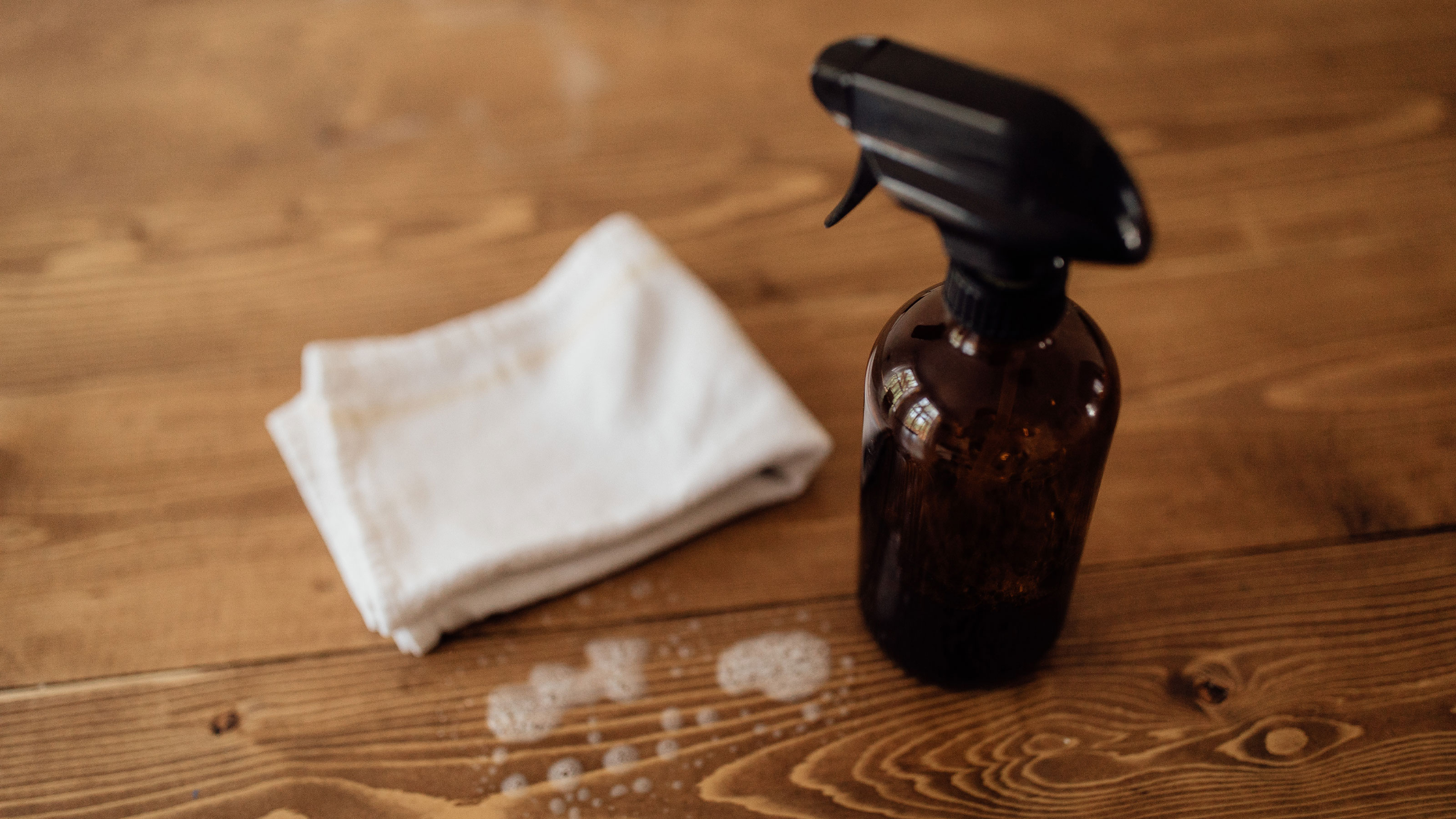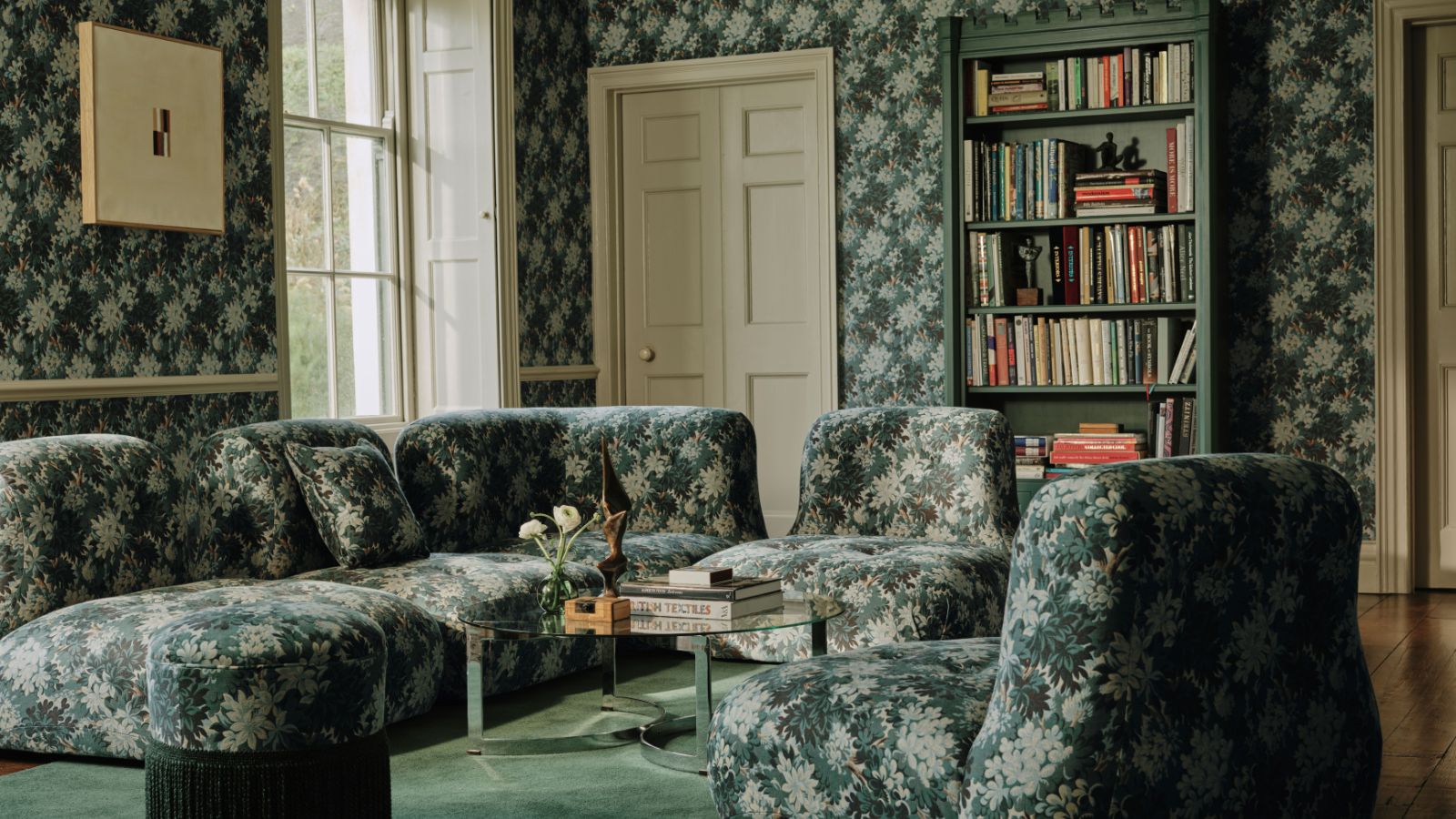My friend's homemade cleaning spray helped to repel the dust in my home
A tip from a pal has put a stop to the dust that kept mounting however much I cleaned


A couple of months ago I moved into a new flat and I love it! However, like in most house moves, when you begin to settle into your new home, you start to notice things and uncover features that you may not have seen upon first inspection. In my flat, this was dust – lots and lots of dust – and I simply could not get rid of it.
I would use all the cleaning tips I’ve ever learned but, within days, and sometimes even hours, more dust would have settled onto the surfaces. It just wasn't going away. I tried using a regular duster, cleaning wipes and chemical sprays, but nothing would stop the dust from appearing everywhere in my home. (And, by the way, I know living with pets can cause homes to get dusty, but I'm not going to be getting rid of my cat, Geri, anytime soon.)
When I was catching up with a friend and telling her about the move, I brought up the annoying dust issue, and she told me she uses a homemade cleaning spray which helps to keep surfaces cleaner for longer and prevents dust from settling. These were the words I need to hear and it’s made my new home so much easier to keep pristine.
This is the recipe for the homemade cleaning spray that’s solved my ever-mounting dust problem.
How to stop dust from settling in your home
I didn’t have to do much shopping to make up this homemade cleaning spray, and I was already cleaning with vinegar so always keep a bottle in the storecupboard. Here’s the full ingredients list and the lowdown on why it works.
What you will need
- Empty spray bottle - such as the JohnBee Spray Bottle
- Half a cup of warm water
- 1 tsp olive oil
- 1 tsp white vinegar
- 1 drop of dishwashing liquid - I recommend Dawn Dish Soap
- A few drops of an essential oil (citrus works well) such as the Benatu essential oils
- Microfiber cleaning cloth, such as the Mr. Siga All-Purpose Microfiber Cloth
How it works
I’d resorted to all sorts of wipes and sprays until my friend told me I could use this dust-ridding spray instead. ‘It’ll save money,’ she told me, ‘and it will make your rooms smell great as well as clean up dust and stop new dust settling.’
Here’s how she explained it works:
- The oil helps to prevent the dust from settling on the surfaces.
- Cleaning with vinegar removes germs and will get rid of the dust mites. Vinegar is largely composed of acetic acid which makes it a natural disinfectant.
- The dish soap will enhance your overall clean.
- Adding essential oils will create a fresh smell and inviting aroma.
Using it is a piece of cake, my friend assured me. ‘Just spray the mixture onto a microfiber cloth and work your way around the surfaces in your home – it's that simple,’ she said. She explained the spray cleans, but will help to repel the dust, keeping it away from surfaces for longer.
Does a DIY dust spray actually work?
Of course, nothing can completely eliminate dust from the home – that is something I am just going to have to accept.
However, my friend's DIY homemade cleaning spray has meant less dust is accumulating between cleans. I’ve found all sorts of surfaces have stayed looking clean for longer and that when I do come to clean again there’s less to deal with, which has been a real time-saver. There is still dust on the floor, of course, but it’s nothing a quick vacuum can't sort.
My verdict? Anything that can make the surfaces that little bit cleaner for longer is a win.
What is the best thing for dusting?
A homemade cleaning spray can be one of the best things to use when dusting all around the home and when you’re cleaning a living room or cleaning a bedroom.
'A duster or dry cloth can just end up moving dust around instead of getting rid of it, so using a spray in combination with a microfiber cloth is the answer as it will help to fully remove it from your surfaces,' says Lucy Searle, global editor in chief of Homes & Gardens.
For spots that are hard to reach, try using a feather duster to dislodge dust and cobwebs and then the best vacuum to remove any dust that has settled onto the floor.
Fabric softener spray, created through a mix of water and fabric softener, can clean effectively. Spray onto your surfaces, wipe and then dry; the solution leaves surfaces clean and smelling good, too.
If you're looking to repel dust from your baseboards, then try using this dryer sheet hack for a quick and effective way to banish dust, or use a Scrub Daddy Damp Duster available at Amazon. Importantly, though, keep an eye out for any signs it's time to replace your Damp Duster, such as bad odors or mold forming, as, while reusable, they don't last forever.
Is it better to dust with a wet or dry cloth?
A wet cloth, or rather one that’s a little damp, is better for dusting. A dry cloth can simply move the dust around, rather than completely removing it from surfaces, whereas a moist microfiber cloth or one that has been sprayed with a cleaning solution will pick up and trap the dust more easily – and it gives your surfaces a good clean at the same time.
Sign up to the Homes & Gardens newsletter
Design expertise in your inbox – from inspiring decorating ideas and beautiful celebrity homes to practical gardening advice and shopping round-ups.

Zara joined Homes & Gardens in February 2022 as a Content Editor. After studying English Literature at University, she worked as an Ecommerce Website Editor, Content Writer and Buying Intern at multiple independent businesses within the luxury retail and lifestyle sectors. Her role at Homes & Gardens unites her love, experience and passion for the world of design and desire to create inspiring written content. She enjoys nothing more than discovering new trends, brands and products, whether that be in fashion, interior design or lifestyle.
-
 How to grow astilbe – expert advice on cultivating this shade-tolerant flowering perennial
How to grow astilbe – expert advice on cultivating this shade-tolerant flowering perennialShade-tolerant and pest-resistant - astilbe are hardy and tough perennials that can thrive in many settings
By Ellen Wells Published
-
 Vintage prints are making a comeback – designers say to look out for these 5 nostalgic patterns this year
Vintage prints are making a comeback – designers say to look out for these 5 nostalgic patterns this yearThese vintage-style patterns are all the rage right now, and we spoke with design experts to learn how best to style them in the home
By Eleanor Richardson Published